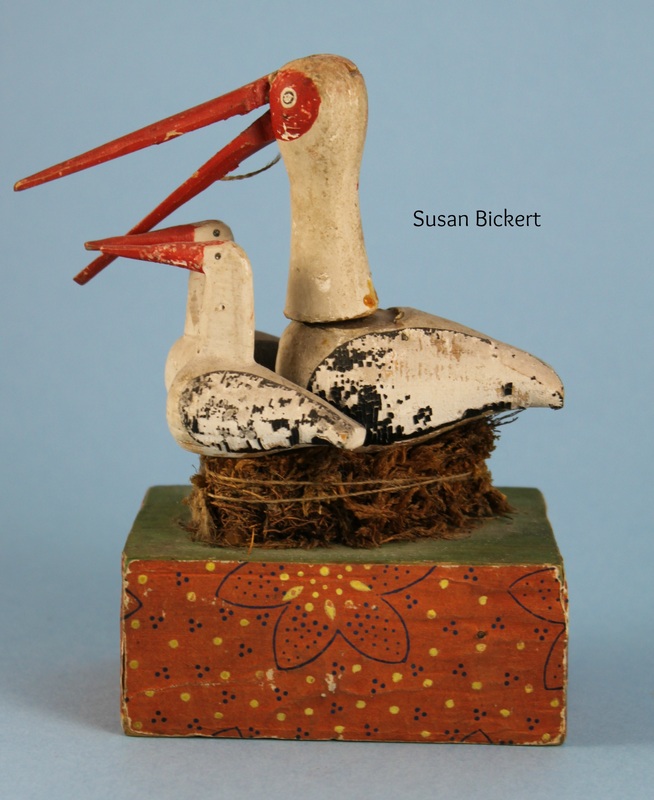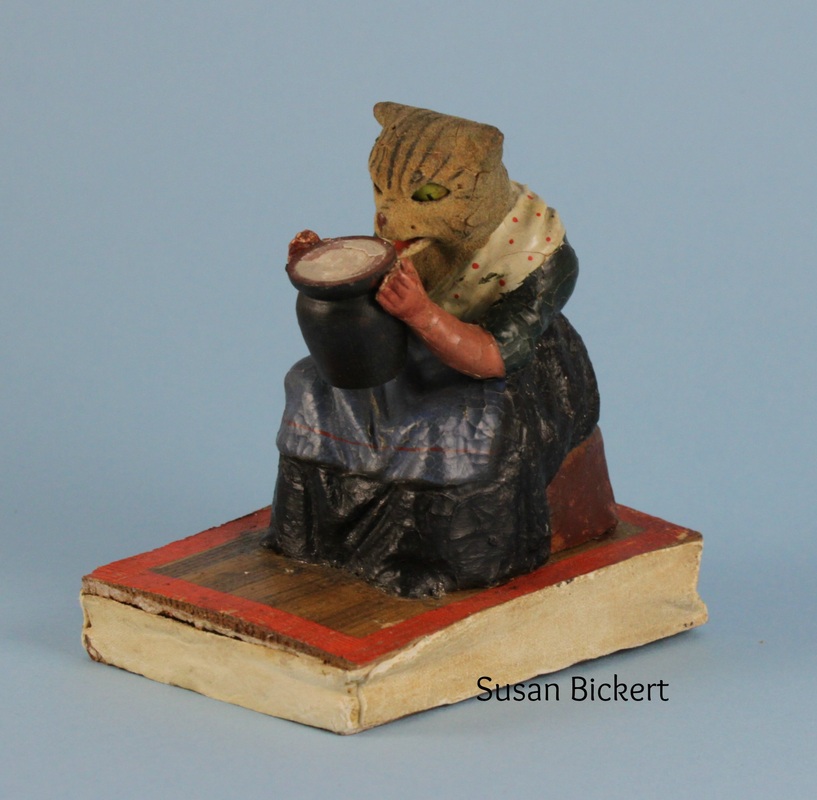|
Our book on "Early Toys" (pre-1900) from the Thuringian and Erzgebirge regions of Germany has been on the market in Europe for about a year now. It's been received very well by toy collectors over there, and even given a special recognition by the respected Nürnberg Toy Museum. Now it's time to begin to promote it to collectors in the US, and (since I'm the only author living in the US) I'm the logical choice! My friends in Germany, Maria and Dieter, and I had always talked about publishing a book together on this topic since an in-depth book had never been done in Germany on this collecting area, in English and German, and certainly never in the United States. It finally all came together after many busy months of working on the project in the Winter of 2012, and we are very proud and happy with the results. I realize there is a small niche of collectors in the US in this area, but thought the Living Tastefully readers might nonetheless like to see a few photos of early toys from my collection and get a taste of what the book is all about. And . . . if anyone is interested in receiving a brochure or purchasing a copy, just let me know! Probably the rarest toy in my collection is this carved wooden Erzgebirge ship made in the Ezgebirge region of Germany, ca 1840s. Very few examples are known of this piece, and what makes it even more special is the little slip of paper glued to the bottom reading "Given to Loveland Munson by his Uncle Jessie Munson of Bradford, N.Y., 1846."l Another rare Erzgebirge piece is this papier-mache soldier on horse pull toy. It also dates to the 1840s. Can you imagine how many of these toys survived being played with by little boys? Not many. Yes, this is considered to be a toy! It is made in the Thuringian region of Germany and is of papier-mache. The gentleman is sitting down to eat a lovely meal set out on the table, and his head nods. Of course, it's a very special piece. Ca. 1850. An Erzgebirge crank toy carved of wood and painted with original old paper covering the base. These early crank toys are called "Klimperkästchen" in German. Ca. 1850. Storks are a favorite in German folklore and incorporated into many types of early toys. Toys with a bellows mechanism in the base that let out a squeak sound are known as squeak toys (of course), and are quite probably my favorite category of early toys. This is a very special one. It is also mechanical, and when squeezed the old man spanks the little child. Unusual squeak toy on wooden wheels with bird of papier-mache. The wooden wheels date this piece to ca. 1860s. Cats are always a favorite of collectors. This squeak toy is also mechanical, and when squeezed the cat's eyes and mouth move as if she is drinking the milk.
4 Comments
Guianvarch
1/20/2016 08:39:20 am
I'm looking for something built by my grand father: firma Christian Erich Beck aus Sonneberg.
Reply
Susan Bickert
1/20/2016 11:15:11 am
Unfortunately, it is rare to know the names of the people who made these toys. None of the toys I have pictured can be attributed to any maker, just a region, and that is the situation with most all early toys.
Reply
Carl Henry
1/16/2017 09:58:33 am
Would love to know how to get a copy of your book.
Reply
Suzanne Weaver
12/23/2020 08:28:07 pm
I was told the paper mache duck pull toy of my husband's was german and I believe it might be Thuringia due to the base on the bunny you had pictured. I am trying to figure it out, as the label is only a tiny bit still there. If you are able to offer any insight I would be most appreciative.
Reply
Leave a Reply. |
Archives
May 2015
Susan's PageWelcome to Living Tastefully’s “Antique of the Week” page. Our love of antiques is reflected in every aspect of our everyday lives. We are passionate about collecting and also love functional antiques that can actually be used and not only admired. Hopefully we can inspire you to incorporate antiques in your home and your life to add charm and beauty to your surroundings.
All
Links
|









 RSS Feed
RSS Feed